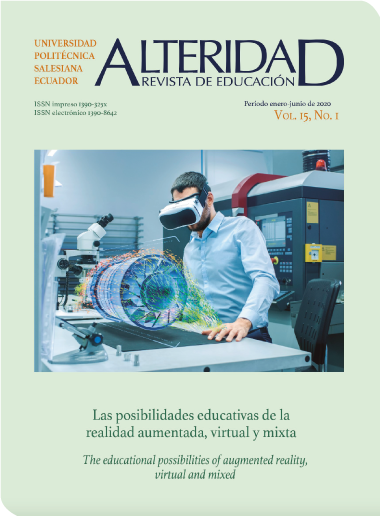Virtual environments for academic writing. A model in Minecraft
Main Article Content
Abstract
The article explores the possibilities that a virtual environment through a commercial video game presents for academic writing within the framework of university education. At the end of 2017, a mixed investigation was conducted through a single case study with a group of 28 undergraduate students; combined techniques of observation and information gathering (open questions, photographs within the virtual environment, field diary, system records), as well as measurement (Likert scale questionnaire) were used to account for the affinity and adaptability expressed by students in the realization of the collective writing exercise within Minecraft. After completing the exercise, the statistical treatment of the questionnaire allowed to establish the presence of the two proposed variables and establish correlations with the rest of the variables of the instrument. For this article, we present only a selection of the results of the questionnaire —e.g. Affinity (0.522, 0.531) and Adaptability (0.508, 0.688) within the group independently of genre— as well as a selection of the complementary observation records. The findings point towards the relevance of the use of adapted videogames as platforms for academic writing within the framework of university disciplinary training. This opens the possibility of thinking about extended uses of virtual environments for inter and intrainstitutional writing and publishing to develop academic literacy.
Article Details
Section
MISCELLANEOUS SECTION
Authorship: The list of authors signing must include only those people who have contributed intellectually to the development of the work. Collaboration in the collection of data is not, by itself, a sufficient criterion of authorship. "Alteridad" declines any responsibility for possible conflicts arising from the authorship of the works that are published.
Copyright: The Salesian Polytechnic University preserves the copyrights of the published articles, and favors and allows their reuse under the Creative Commons Attribution-NonCommercial-ShareAlike 3.0 Ecuador license. They may be copied, used, disseminated, transmitted and publicly displayed, provided that: i) the authorship and the original source of their publication (journal, editorial and work URL) are cited; (Ii) are not used for commercial purposes; Iii) mention the existence and specifications of this license.
Copyright: The Salesian Polytechnic University preserves the copyrights of the published articles, and favors and allows their reuse under the Creative Commons Attribution-NonCommercial-ShareAlike 3.0 Ecuador license. They may be copied, used, disseminated, transmitted and publicly displayed, provided that: i) the authorship and the original source of their publication (journal, editorial and work URL) are cited; (Ii) are not used for commercial purposes; Iii) mention the existence and specifications of this license.

